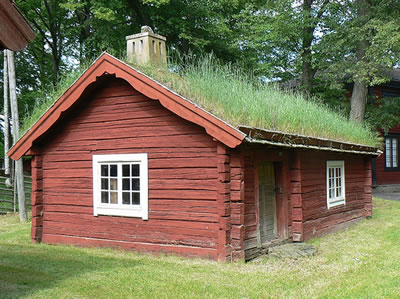Installing a roof may sound like a job best left to the professionals and indeed, if you have any doubts about your DIY capabilities, you might be better off calling in the experts. A roof protects your whole house so it’s a vital component to get right.
However, it doesn’t take much DIY know-how or experience to be able to install a flat roof yourself, and you could potentially save a fair bit of money.
This guide to DIY flat roofing kits walks you through all of the essential considerations and how to go about installing your own roof yourself.
The basics of flat roofing
Flat roofs are essentially a simple construction with joists stretching over the gap between two walls, which are then covered either by sheet timber or some other kind of materials. If timber is used, additional waterproofing membranes are required.
The weight of these materials along with the dimensions of the roof will determine the size of the joists to be used. Because a flat roof will need to be strong enough to bear significant weight at times, such as snow, there are building regulations which must be met.
It’s therefore not a great idea to simply pick a DIY flat roofing pack off the shelf. Most suppliers including Interloc offer great advice so give them a call. Whether you are looking to put a flat roof on a dormer or a garage, specifying the size and providing a photo or a sketch of your property will enable a specialist building company to put together the right kind of DIY pack to meet your needs and comply with regulations too.
Typical contents of a flat roof DIY pack
Although there are a myriad of possibilities when it comes to choosing materials for your flat roof, one of the most reliable, stable and easy to install options is the single ply membrane.
A polymeric single ply roofing membrane should be large enough to cover your entire roof without any gaps; when measuring remember to round up, not down. If the boards are intact and in good condition, you need not replace them, you can simply strip off the existing materials and recover them with your new membrane.
A strong water-based adhesive will be needed; you will use this to stick your membrane to the boarding so it’s imperative that it forms a tight seal. The adhesive that comes with the DIY pack should be sufficient for your space but if in doubt, the packaging will confirm the average coverage. You may also have a spray contact adhesive; this is used for gluing the membrane to walls.
One of the easiest ways to apply the adhesive is with a wallpaper roller. If the adhesive is heat activated, you should be given the chance to rent a hot air gun for a period of time. Adhesives which are heat activated are amongst the best at making the membrane impervious and durable.
You will also need trimming for the corners which helps ensure there are no nooks and crannies for moisture to seep through.
Installing single ply membrane roofing
The idea of installing roofing may be daunting but in most cases, a flat roofing kit should take less than a day.
Single ply roofing solutions are not just one of the easiest materials to lay, they are also cost-effective and very durable too. A typical EDPM or TPO membrane has a life expectancy of more than 25 years, longer than than the more traditional covering of bitumen or felt.
Of course, a flat roof is also ideal for transformation into a green roof so this could be an alternative to a DIY flat roof pack!
Conclusion
If you have a flat roof it’s important to make sure that your home insurer is aware as some may not be willing to cover properties with roofing which is less than a certain pitch. However, there are many that will so don’t be deterred.
A flat roofing DIY kit is an economical way of cutting the cost of getting a new roof and with simple step by step instructions which come with each pack, you can be certain that the end quality of the roof will be everything your property needs and deserves.



